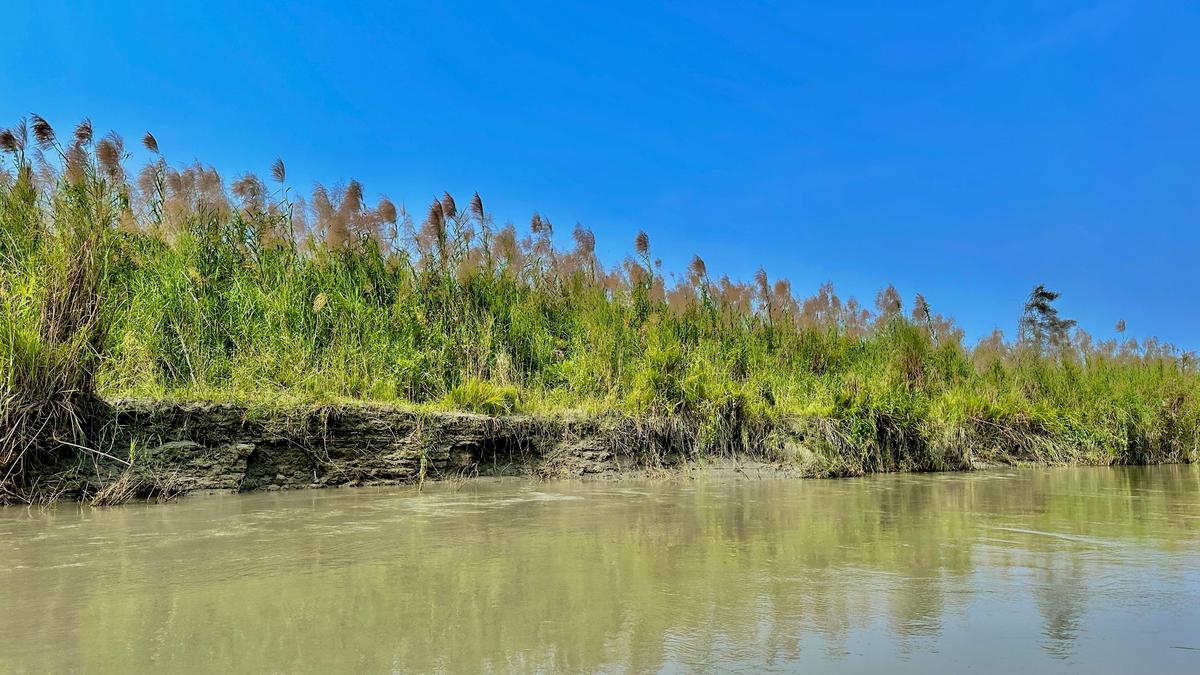Science
Native Plants Disrupt Ecosystem in Assam’s Dibru-Saikhowa Park

A recent study has revealed that two native plant species are significantly altering the ecosystem of eastern Assam’s Dibru-Saikhowa National Park, which is notably the only habitat for feral horses in India. The research highlights the impact of native plants, specifically Bombax ceiba and Lagerstroemia speciosa, alongside various invasive species that threaten the delicate balance of the park’s grassland ecosystem.
The findings, published in the journal Earth, detail how the native species, commonly referred to as Simalu and Ajar in Assamese, have compounded the environmental challenges already posed by invasive plants such as Chromolaena odorata and Ageratum conyzoides. The study emphasizes that these changes are largely due to recurring floods from the Brahmaputra River and increasing human pressures from nearby forest villages.
Study Highlights Ecosystem Changes
The researchers utilized remote sensing and geographic information systems to analyze land use and land cover (LULC) changes in the national park from its establishment as a protected area in 1999 to the present. Their analysis revealed that grasslands comprised approximately 28.78% of the park’s 425 sq. km area in 2000, followed closely by semi-evergreen forests at 25.58%. By 2013, however, shrubland emerged as the dominant land type, covering 81.31 sq. km, while degraded forest areas expanded to 75.56 sq. km.
The study reported that between 2000 and 2013, significant portions of grassland and semi-evergreen forest were converted to shrubland. By 2024, the area of degraded forest increased to 80.52 sq. km, indicating a troubling decline for grassland habitats.
Implications for Biodiversity
The researchers warned that forest degradation could have dire consequences for biodiversity, even in the absence of a reduction in forest area. This degradation threatens local wildlife, undermines carbon storage, and may exacerbate climate change. The Dibru-Saikhowa National Park straddles the Dibrugarh and Tinsukia districts and was designated a Biosphere Reserve by UNESCO in 1997.
The study’s authors, including Imon Abedin, Sanjib Baruah, Pralip Kumar Narzary, and others, highlighted that the changes in the park’s landscape pose serious threats to grassland-dependent species. This is particularly concerning given that many of these species, such as the Bengal florican, hog deer, and swamp grass babbler, are already facing significant population declines.
The park is also home to around 200 feral horses, descendants of military horses abandoned during World War II. The survival of these horses and other native species is increasingly at risk due to habitat loss and ecological changes.
In light of these findings, the study advocates for a targeted grassland recovery initiative. This project would involve controlling invasive species, enhancing surveillance, increasing staffing resources, and potentially relocating forest villages to lessen human impact. The researchers emphasize that implementing informed LULC management can help protect critical habitats, mitigate degradation, and bolster the survival prospects of native flora and fauna in the Dibru-Saikhowa National Park.
As the situation evolves, continued monitoring and proactive conservation efforts will be essential to protect this unique ecosystem and its inhabitants.
-

 World5 months ago
World5 months agoSBI Announces QIP Floor Price at ₹811.05 Per Share
-

 Lifestyle5 months ago
Lifestyle5 months agoCept Unveils ₹3.1 Crore Urban Mobility Plan for Sustainable Growth
-

 Science4 months ago
Science4 months agoNew Blood Group Discovered in South Indian Woman at Rotary Centre
-

 World5 months ago
World5 months agoTorrential Rains Cause Flash Flooding in New York and New Jersey
-

 Top Stories5 months ago
Top Stories5 months agoKonkani Cultural Organisation to Host Pearl Jubilee in Abu Dhabi
-

 Sports4 months ago
Sports4 months agoBroad Advocates for Bowling Change Ahead of Final Test Against India
-

 Science5 months ago
Science5 months agoNothing Headphone 1 Review: A Bold Contender in Audio Design
-

 Top Stories5 months ago
Top Stories5 months agoAir India Crash Investigation Highlights Boeing Fuel Switch Concerns
-

 Business5 months ago
Business5 months agoIndian Stock Market Rebounds: Sensex and Nifty Rise After Four-Day Decline
-

 Sports4 months ago
Sports4 months agoCristian Totti Retires at 19: Pressure of Fame Takes Toll
-

 Politics5 months ago
Politics5 months agoAbandoned Doberman Finds New Home After Journey to Prague
-

 Top Stories5 months ago
Top Stories5 months agoPatna Bank Manager Abhishek Varun Found Dead in Well









